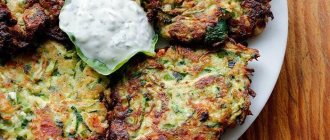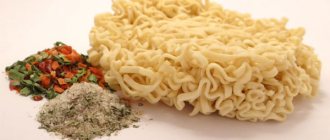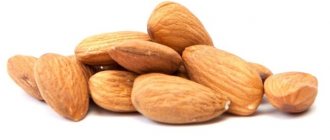03/28/2018 Category: Nutrition for a nursing mother Author: Larisa Morozova
Today there is a huge range of cheeses on sale: hard and soft, processed and smoked. Each variety has its fans. However, after the birth of a child, a nursing mother strictly reviews her usual menu. Everyone knows that it should contain fermented milk products, but eating cheese while breastfeeding has its own nuances.
- Beneficial and harmful effects on the body of a nursing mother and baby
Video: all about the benefits and harms of cheese (opinion of resuscitator, nutrition specialist Tatyana Ukhova)
- Photo gallery: main types of product
- Video: how to choose the right cheese (advice from a nutritionist), how and how long to store the product
- Video: homemade kefir cheese
Chemical composition of cheese
Today there are more than 500 varieties of cheese. They differ from each other, but contain similar components. First of all, it is an easily digestible milk protein. It is contained in the product in large quantities (up to 25%) and is a building material for the human body.
At 70 gr. Some types of cheese (for example, Emmenthal) contain as much protein as 100 g. meat, 100 gr. fish and 2 eggs.
Gastroenterologist of the highest category, Doctor of Medical Sciences Vasiliev Vladimir Aleksandrovich
ttp://gastrohelp.od.ua/gastroenterolog-vasilev-televidenii-odessa-polze-syra-c-104_113.html
Cheese protein, in turn, consists of 20 amino acids, among which there are deficient tryptophan, lysine, and methionine.
The fermented milk product is rich in vitamins A, group B, C, D, E, P. It contains large quantities of trace elements - calcium, zinc and phosphorus (calcium, for example, in 100 g is the same as in 900 ml of milk), is also present iron, potassium, magnesium, copper, manganese and sodium.
The cheese also contains extractive substances that affect the human digestive glands, stimulating appetite.
Cheese is a fairly high-calorie product: 100 g contains as much as 300–400 calories.
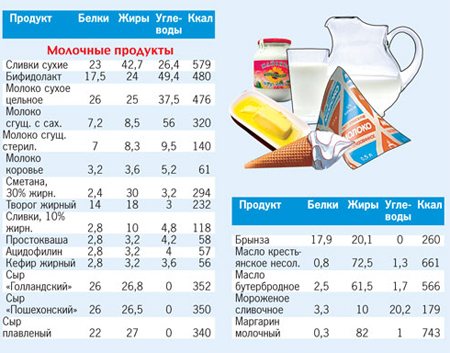
Compared to other dairy products, cheese is very high in calories.
Composition and benefits
At the moment, there is a wide variety of cheeses made from various raw materials: cow's milk, as well as sheep's and goat's milk. The classic version is solid, including a lot of valuable components, which provide benefits to the body. Other varieties of this product have a similar composition, the difference lies in the specific gravity of the individual components.
| Element | % of daily value in 100 g | Impact on the body |
| Vitamin A | 44.4 | It is an antioxidant, important for the quality of vision, strengthens the immune system, participates in protein synthesis, normalizes metabolic processes, and slows down aging. |
| Vitamin B 2 | 16.7 | It is important for the formation of red blood cells, regulates growth processes, is necessary for healthy skin and hair, strengthens the immune system, and normalizes the functioning of the thyroid gland. |
| Vitamin B 12 | 46.7 | It is important in the process of cell division and DNA formation, participates in regeneration processes, metabolism, strengthens the nervous system, prevents the development of depression, and prevents the development of anemia. |
| Vitamin PP | 22.6 | Participates in redox processes, normalizes the functioning of the nervous system, improves cardiovascular activity, preventing the development of thrombosis and normalizing cholesterol levels. |
| Calcium | 100 | An important element of bone tissue and teeth. Participates in blood clotting processes and activates hematopoiesis. |
| Magnesium | 12.5 | Normalizes heart function, strengthens the nervous system, improves reproductive functions, prevents the deposition of kidney stones, and improves the condition of teeth. |
| Sodium | 66.2 | In combination with potassium, they normalize fluid balance, stimulate digestion, the functioning of the urinary system, and promote the preservation of calcium in the body. |
| Phosphorus | 67.5 | Participates in the functioning of the nervous system and the functioning of the brain, together with calcium is responsible for the formation of bone tissue, regulates growth processes, is responsible for cell regeneration, and activates the action of vitamins. |
| Zinc | 33.3 | Participates in cell regeneration processes, is important for hair growth, nails, skin condition, and helps strengthen the immune system. |
In addition to these elements, cheese contains iron, copper, selenium, manganese and potassium, but in smaller percentages.
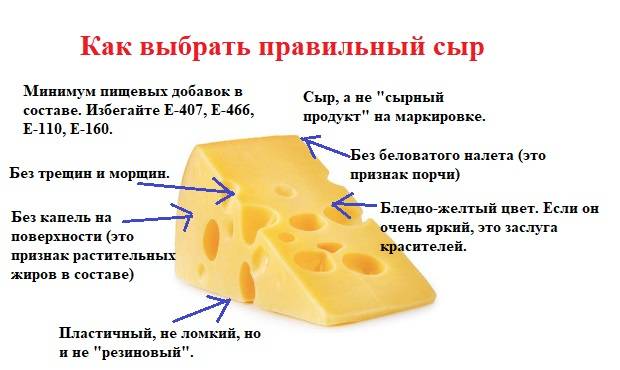
The benefit also lies in the fact that this dairy product contains protein, which is more easily absorbed by the body, which cannot be said about dairy.
Beneficial and harmful effects on the body of a nursing mother and baby
The rich composition of cheese explains the benefits it brings to the human body.
First of all, the protein obtained from the product is absorbed by the body much more easily than milk. This is due to its change during the cooking process. Cheese is much less likely to cause allergies in young children. It contains virtually no lactose, while retaining all the beneficial dairy components.

The protein contained in cheese is much easier to digest than milk
Cheese also has the following beneficial properties:
- Strengthens bones, improves the condition of skin and nails, and makes hair stronger.
- It has a beneficial effect on the gastrointestinal tract and stimulates the functioning of the digestive glands.
- Strengthens the immune system and is a source of energy.
- Stimulates the process of hematopoiesis, improves the movement of lymph.
- Maintains water balance in the body.
- Reduces the risk of developing diabetes and tuberculosis.

. The vitamins and minerals contained in cheese are simply necessary for a nursing mother, weakened by recent childbirth. The baby also really needs them for full development. All valuable substances obtained from the product immediately pass into breast milk.
However, in addition to all its advantages, cheese also has negative properties.
- Due to the rather high sodium content, the product can be harmful for gastritis, stomach ulcers, urolithiasis, and aggravate the condition of hypertension.
- If the cheese is too salty (there are such varieties), it can cause fluid retention in the mother’s body, which, in turn, negatively affects milk production.
- Since the product has the ability to stimulate appetite, despite its caloric content, it can contribute to the appearance of excess weight in a woman, which often occurs after childbirth.
- Cheeses with additives (spices, flavorings, pieces of mushrooms, ham) will most likely cause digestive upset in an infant - from diarrhea to serious poisoning.

Despite the fact that cheese is high in calories, it stimulates the appetite due to the content of extractive substances
Video: all about the benefits and harms of cheese (opinion of resuscitator, nutrition specialist Tatyana Ukhova)
Contraindications
It is prohibited to use the product during breastfeeding if you have intestinal diseases, urolithiasis, gastritis, ulcers, or milk protein intolerance.
During lactation, it is prohibited to introduce cheeses with added additives into the diet - mushrooms, herbs, ham, onions, bacon (see below). Such components cause bloating, colic, flatulence, nausea, vomiting, and upset bowel movements in the baby.
You should not eat cheese during breastfeeding as a separate dish; it is better to add it to a salad or make a sandwich with whole grain bread.
Allowed and prohibited varieties for breastfeeding
Numerous varieties of cheese differ from each other in taste, consistency, and production technology. In addition, each producing country has its own unique recipes, proven over centuries.
Enzymes and special bacteria are used to produce cheese. The basis of the product can be not only cow’s milk, but also goat’s and sheep’s.
It turns out that not all types of cheese are equally healthy for a nursing mother.

Not all types of cheese can be included in the diet during lactation
- Hard (rennet). It is prepared using rennet, an organic substance produced in the stomach of young cattle. After the cooking and pressing processes, such a product undergoes a long ripening period (from six months to several years). It is distinguished by high fat content (over 50%) and calorie content, while the moisture content is low (less than 55%). Because of this, cheese should be consumed in limited quantities during lactation (maximum 30 g per day). Representatives: “Russian”, “Kostromskoy”, “Parmesan”, “Swiss”, “Cheddar”.
- Soft. Also classified as rennet, but has a short ripening period. It has a soft creamy taste and pasty consistency. This cheese is not very fatty (30–40%) and has high humidity (over 65%). This variety is most suitable for a nursing mother, who can consume it without fear. However, this cheese is the most appetizing. Representatives: Roquefort, Camembert, Smolensky, Dorogobuzhsky.
- Brine. During the production process, such cheese is kept in brine, which is why it acquires a crumbly consistency and a delicate salty, creamy taste. The product is prepared from cow, goat and sheep milk. Although it is safe for nursing mothers, in large portions it can cause dry mouth. Representatives: “Suluguni”, “Feta”, “Brynza”, “Ricotta”, “Adygei”, “Mozzarella”.
- Fused. It is obtained from the hard variety as a result of heat treatment and the addition of butter, cream, and milk powder (curd cheese, accordingly, is added to curd cheese). The product is ideal for making sandwiches and seasoning soups. However, such cheese is heavier on the stomach and is less digestible, so it is not recommended for consumption in the first month after childbirth. In addition, to add a piquant taste, manufacturers often add flavorings and flavor enhancers (including monosodium glutamate) to the product, which is unacceptable for the diet of a nursing mother. Representatives: “Druzhba”, “Yantar”, “Omichka”, “President”, “Hochland”. Sausage cheese is a special type of processed cheese; melting salts give it its characteristic consistency.
- Blue cheese. Produced using mold fungi. Although this additive is approved by specialists, it often causes allergies in infants and can worsen the taste of breast milk.
- Smoked. During the production process, the product is treated with smoke (natural or liquid). Unscrupulous manufacturers add flavorings, dyes, and flavor enhancers to it. In addition, cheese contains a lot of salt. This delicacy is contraindicated when breastfeeding.
Photo gallery: main types of product

Cheese becomes smoked as a result of processing with natural or liquid smoke

Soft cheese has a delicate taste and pasty consistency

Processed cheese is made by adding butter, cream and milk powder
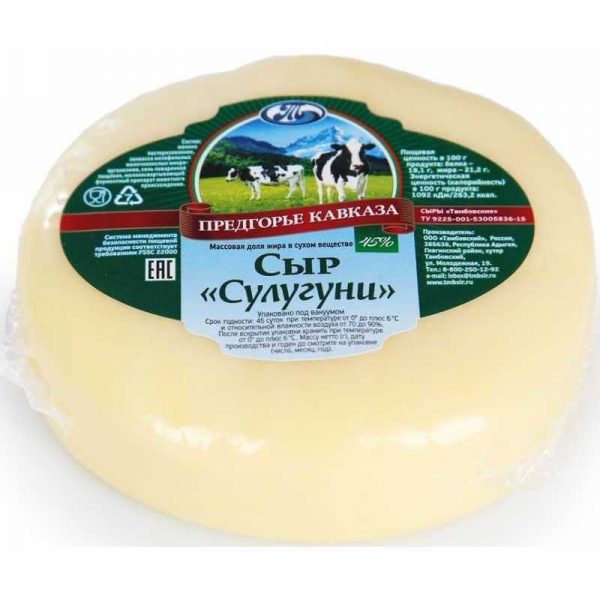
Pickled cheese is crumbly and has a salty taste.
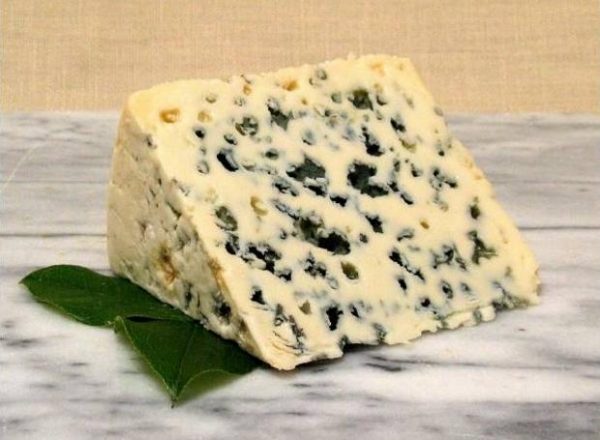
Blue cheese often causes allergies in babies

Hard cheese has a long ripening period, sometimes reaching several years
Harm of processed cheese during breastfeeding
As you can see, processed cheese contains a lot of vitamins, microelements and other substances necessary for both the child and the nursing mother. But can he be dangerous?
Unfortunately yes. The following are dangerous components of processed cheese:
- Sodium . This product contains a large amount of sodium. This element can be dangerous for people with high blood pressure and other cardiovascular diseases.
- Phosphate and chemical additives . You can often find all kinds of food additives in processed cheese. They can cause allergies in the baby and also disrupt kidney function.
- Lemon acid . Manufacturers sometimes add this substance to cheese to speed up ripening. Citric acid can increase acidity and negatively affect the gastrointestinal tract in both the baby and the mother.
- Melting salts. It all depends on what kind of melting salts were added during production. For example, tartaric acid (E334) and polyphosphates (E452) are not dangerous to the body in the amount in which they are contained in processed cheese. But modified starch (E1442) has a negative effect on the child’s body. In addition, this substance is added to cheese only if vegetable fats were used instead of dairy fats during production, which is a violation of the technology for preparing real processed cheese.
- Palm oil. Much has been said about the dangers of this oil, but unscrupulous manufacturers continue to use it in the food industry. Palm oil is a carcinogen; In addition, this product increases cholesterol and impairs the functioning of the circulatory system and the body as a whole.
When and how to introduce permitted varieties into the diet
Since the protein contained in cheese is very well absorbed by the gastrointestinal tract, the product can be consumed already in the first month after the birth of the child. To do this, mom should choose a soft or low-fat pickle variety (up to 20% fat), naturally, without any additives.
The first portion should be small - no more than 20-30 grams. It is better to eat cheese during breakfast, and then monitor the baby’s well-being for two days: it is still a dairy product, so the possibility of an allergy cannot be completely ruled out. If the child feels well, then next time the mother can slightly increase the portion.

The first time the portion of cheese should be small
Hard cheese should be included in the diet only from the second month of a child’s life.
Since cheese is a high-calorie product, it should not be overused. The maximum portion is 60 grams per day. It is better to eat it not separately, but as a tasty and nutritious addition to dishes: in salads, sandwiches, with pasta.

It is better to consume cheese not separately, but as part of dishes, for example, a sandwich
A nursing woman should carefully choose a product in the store, paying attention to the composition and production time. The ideal option is a home-made product: there is no need to doubt its quality. Do not store cheese in the refrigerator for too long (more than five days).
If the baby’s body does not accept cheese very well, it can be replaced with cottage cheese. It is also a nutritious and healthy product. In addition, there is no need to be too zealous in consuming fermented milk products. If, for example, a woman ate a cheese salad today, then it is better to leave kefir or fermented baked milk for tomorrow.
Video: how to choose the right cheese (advice from a nutritionist), how and how long to store the product
Recommended dose of cheese
Cheese is considered a fairly healthy product during breastfeeding. However, when consuming such food, like any other, it is necessary to observe moderation. The maximum permissible daily intake is 50 g/day. During breastfeeding, you should give preference to cheeses without any additives; it is advisable to prepare such food yourself. There are no difficulties in making homemade cheeses. In addition, the nursing mother will be confident in the quality and freshness of the product.
We recommend reading: Walnuts during breastfeeding

Recipes for home cooking
If a nursing mother has the time and desire, she can make healthy homemade cheese. It is often made using vinegar, but you can choose a more neutral option, where the milk protein coagulates due to lactic acid.
Ingredients:
- 1 liter of normalized milk with a fat content of 3.2% (it is better to buy it in the store, since homemade milk is usually too fatty);
- 1 liter of kefir (you can replace it with sour milk);
- a pinch of salt.
Preparation:
- Bring the milk to a boil (but do not boil).
- Pour in kefir in a thin stream while stirring constantly. The cheese grains will separate from the whey.
- Remove the pan from the heat and lightly add salt (you don’t have to do this, since the cheese contains its own sodium chloride).
- Using a colander lined with multilayer gauze, separate the cheese mass from the liquid.
- Tie the cheese ball with gauze and place it in a plate under pressure for about four hours.
Over time, you can add greens to your homemade product to taste: this is done immediately before placing it under the press.

Mom is always confident in the quality of a homemade product
Video: homemade kefir cheese
How to make cheese at home
An easy and quick variety to prepare at home is Brynza. In addition, this type is not contraindicated during breastfeeding. We offer a traditional recipe for Brynza without adding spices and herbs, which are harmful to the still fragile body of a newborn. Take:
- Cow's or goat's milk with the lowest fat content - 3 liters;
- Natural, apple or wine vinegar - 3 tbsp. spoons;
- Salt – 1 tbsp. spoon.
Bring the milk to a boil, add vinegar and salt. Stir the mixture with a spoon until the salt has dissolved and the milk has curdled. The result is curd mass and whey. Drain off the whey, place the curd mass in a colander with cheesecloth and strain to remove any remaining whey. Place the cottage cheese under pressure (press) and leave for 1-2 hours. After which you can eat the cheese right away.
As a result, you will get cheese that is not too salty and not too sour, which is suitable for a nursing mother and baby. Store cheese in boiled, salted water. This type of cheese can be used to prepare a Greek salad with olive oil dressing.
Can a woman eat cheese while breastfeeding? You will answer this question for yourself by learning about the properties of cheese, its composition, as well as how and who can eat this wonderful product, and who, on the contrary, should abstain.
Cheese, like any product, should be introduced into your diet gradually, eating a small piece a day at first, carefully monitoring the condition of the baby. If all is well, then the amount of cheese consumed can be increased to reasonable standards. Please note: each new type of cheese should be considered as a new product on your menu.
Cheese and lactation
Based on the saturation of the product with calcium and other beneficial substances, it can be included in the menu of a nursing woman. However, this must be done carefully and gradually. It must be taken into account that the fat content in the product can be from 10 to 60%. Hard cheese is high in calories.
In principle, this dairy product does not belong to the allergenic category, so it cannot cause skin reactions in the baby. And yet, it is worth introducing it into the diet gradually when breastfeeding. Try eating a small piece of the product (20-30 grams) at lunchtime. Observe the baby's reaction throughout the day. If the stool has not changed, there is no colic, the baby is calm, then you can increase the portion of the product next time to 40 grams. And when the mother notices that the child is experiencing discomfort, his legs are tightening, and stools have become less frequent, then it’s worth forgetting about the healthy product for a month. When repeating an attempt to introduce it into her menu, a woman should choose less fatty cheese and consume no more than 20 grams of it.
Breastfeeding experts advise nursing mothers to choose pickled cheeses made from sheep's and goat's milk. After all, whole cow's milk during lactation sometimes causes allergies in infants. Ricotta cheese with a fat content of 10% is suitable. You can also try a little Brynza. Pediatricians say that from early childhood a child should get used to a variety of tastes - salty, sweet, sour, spicy. And it is mother’s milk and its taste that introduces them to them.
Feta is a goat's milk product. It is recommended for lactating women because it tastes like milk, which is one of the healthiest foods in the diet of a nursing mother. At an early stage of the baby’s life (at least up to three months), she needs to choose varieties that are not too fatty.
It is worth considering that this product has a number of restrictions for use during lactation. It is not recommended to be included in the menu for gastritis, hypertension, or ulcers. Too salty varieties can cause fluid retention in the body, which negatively affects breast milk production. During lactation, you should not eat cheeses with added mushrooms, ham, or spices. Foods with mold are also prohibited as they may cause diarrhea.
To make your diet more varied, this product can be combined with others. For example, you can bake vegetables or meat in the oven, sprinkling them with cheese at the end. It will also add an original taste to vegetable salads; in this case, it is recommended to add it grated.
Today you can find such a variety of cheeses on store shelves that it’s difficult to resist buying them. Smoked, hard, soft, melted, curd varieties of the product will not leave anyone indifferent. But a nursing mother needs to make wise choices so that her nutrition does not harm her baby. Is cheese good for breastfeeding? Which varieties should you prefer and which ones should you avoid?
